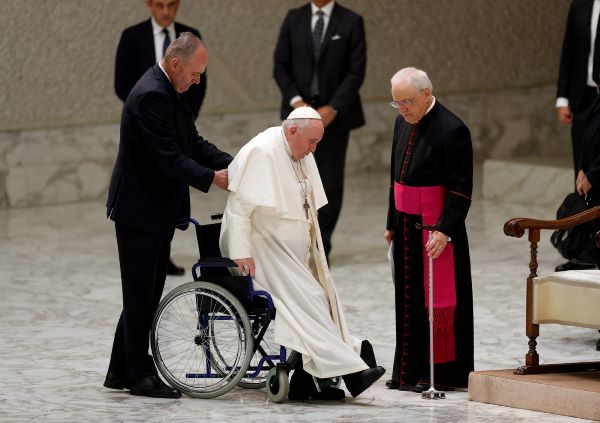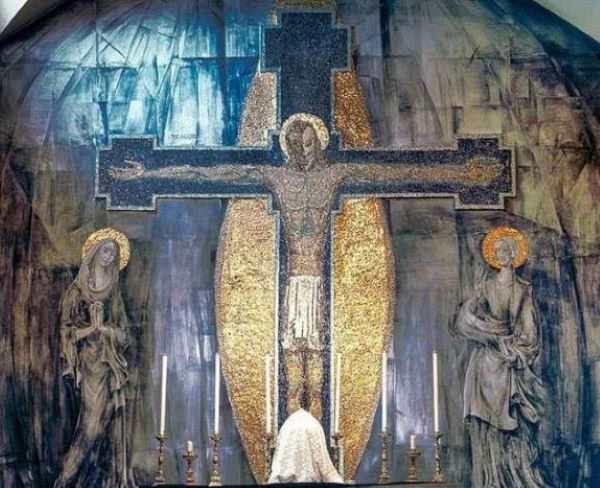There is renewed pressure on Salford Diocese to protect a rare mural “of dazzling beauty” in a redundant church in Greater Manchester.
The Department for Culture, Media and Sport listed both the work and the Church of the Holy Rosary, Oldham, where it resides, on 10 August. The decision obliges the diocese to safeguard the building which has been broken-into several times in recent weeks.
The Conservation group, SAVE Britain's Heritage spent years highlighting the mural's importance. Historic England recommended the Grade II listing. The Hungarian artist, George Mayer-Marton (1897-1960), completed the mural in 1955 using a rare combination of mosaic and fresco.
John Corrigan, Properties Manager at Salford Diocese, acknowledged that the listing obliges the diocese to do all it can to protect the fresco and to find a new use for the church, and that this presents a huge challenge.
“The building is not of great significance. It is in poor condition and in a poor area,” he said.
Security patrols had been ordered since the latest attack by vandals last week, and Corrigan said various meetings would be held to determine the next step.
“We are looking at all options,” he added.
Historic England’s new list entry describes the work’s striking aesthetic combination of neo-Byzantine mosaic and modernist Cubist-influenced fresco, inventively applied to traditional Christian iconography in a deeply personal evocation of suffering and redemption.
The Oldham Mural is one of only two ecclesiastical murals by Mayer-Marton that survive in situ, and the only one that incorporates both fresco and mosaic. It is thought to be the first use in Britain of the Byzantine mosaic method that he employed.
Mayer-Marton’s great nephew, Nick Braithwaite, said he was delighted that the mural is finally getting the recognition it deserves. The director of the Victoria and Albert Museum, Tristram Hunt, praised the work for its “dazzling beauty”.
Key to the listing decision was the discovery of new evidence that frescoes of Our Lady and St John which originally flanked the Crucifixion, and which had been painted over in the 1980s, were still intact beneath the paint.
The testing, commissioned by Mr Braithwaite, reversed earlier findings which had resulted in the rejection of an application to list the mural in 2017.
Heritage Minister Nigel Huddleston said: “This stunning mural in the Church of the Holy Rosary deserves to be listed at Grade II. This will protect the one-of-a-kind mural and serve as an important reminder for future generations of Hungarian artist George Mayer-Marton's escape from Nazi persecution.”
Henrietta Billings, director of SAVE Britain’s Heritage, said: “This is a fantastic result for Oldham, and modern public art in England. We’re delighted that the mural will now be celebrated and finally given the recognition it deserves. Listing will open up a new chapter for this building and artwork and we look forward to helping the Diocese of Salford to find a new and sympathetic owner.”
Mayer-Marton was a leading figure in the Viennese art world in the 1920s and 1930s. He and his wife fled Nazi persecution, arriving in Britain in 1938, where he began working as a lecturer for CEMA, the predecessor of the Arts Council. In 1952 he was appointed as a lecturer at the Liverpool College of Art. There he established the Department of Mural Art and the UK’s first course in this technique.
He made frescoes and mosaics for a number of Catholic churches in Lancashire and Cheshire, one of which, the Pentecost, now resides in the Metropolitan Cathedral of Christ the King in Liverpool.



 Loading ...
Loading ...